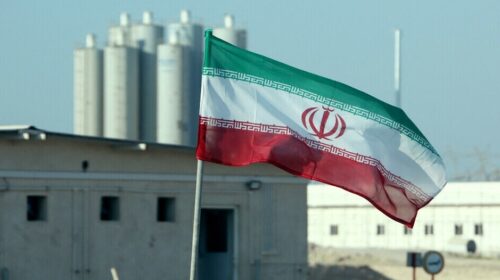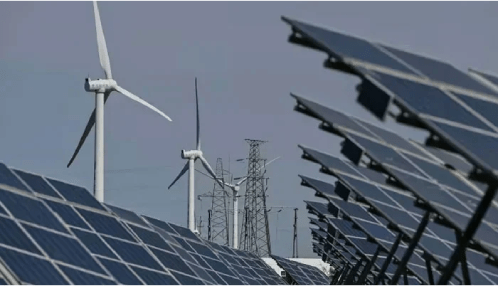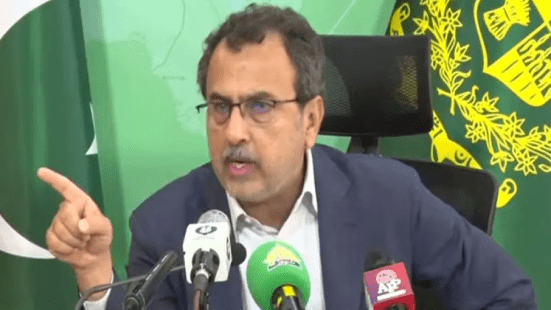When a senior government minister of either Iran or Russia says that the two countries are now experiencing a ‘golden age’ in developing relations between them then it’s a pretty safe bet that one or more countries somewhere are going to be in serious trouble pretty soon. Iranian Petroleum Minister, Javad Owji’s, comment was echoed by senior Russian officials, which makes matters much worse for everyone else, as did his additional statement that the authorities of the two countries are “determined to strengthen cooperation in all sectors”. Aside from the military cooperation between the two that the world has seen recently in the use of Iranian drones by Russia on Ukrainian civilian targets and before that the use of Russian arms by Iran on Syrian civilian targets, among others, there are several areas of cooperation planned that pertain specifically to the oil and gas sector. Over and above the limitless possibilities for evading sanctions on Russia or Iran that Iran’s influence over Iraq affords Tehran and Moscow, as analysed in depth in my latest book on the global oil markets, there is the stranglehold that the two energy superpowers can place over much of the world’s supply of oil and gas should they wish to do so, which they do. Iran has an estimated 157 billion barrels of proven crude oil reserves, nearly 10 percent of the world’s total and 13 percent of those held by OPEC. As great as its oil reserves are, its gas reserves are even greater, with Iran having estimated proven natural gas reserves of 1,193 trillion cubic feet (Tcf), second only to Russia, 17 percent of the world’s total and more than one-third of OPEC’s. Russia, aside from holding the world’s largest natural gas reserves at 1,688 Tcf, has at least 80 billion barrels of proved oil reserves and has been a top three producer of crude oil for many years, easily able to produce at least 10.5 million barrels per day of petroleum and other liquid fuels.
One of the factors that has held back crude oil production in Iran has been the low yield from its oil fields, which has hovered between the four to five percent range for years. This is not a function of any true difficulty in recovery – in fact, crude oil from the majority of Iran’s oilfields is as easy as from any other of the world’s easiest to produce oilfields in Iraq or Saudi Arabia, as attested to by the US$1-2 pb lifting cost in the country. Rather, this low recovery rate is a function of sanctions that have been in place one way or another since the U.S. Embassy hostage siege that began in 1979. These sanctions were stepped up again after the U.S.’s unilateral withdrawal form the Joint Comprehensive Plan of Action (‘JCPOA’, colloquially the ‘nuclear deal’) in May 2018.
Related: Surging Energy Costs Cripple UK Ceramics Industry
These sanctions have cut Iran off from the latest technology and equipment needed to lift the recovery rate at its oilfields. It has broadly been left to companies associated with Iran’s Islamic Revolutionary Guard Corps to do their best with the equipment they have. It should be noted that during the period leading up to the JCPOA being officially announced on 14 July 2015, a top international oil company was on the verge of signing a development deal with Iran, in which it foresaw no problem in increasing the recovery rate from its oilfields to at least 12.5 percent within 12 months and to at least 25 percent in the 12 months after that.
With unfettered access now to Russian technology and equipment, Iran should be able to significantly increase the recovery rate at its oilfields by far more than it has been able to do for years. The preparations for such an eventuality were laid by Russia and Iran back before Russia invaded Ukraine on 24 February 2022. Just over one month before, as analysed in depth by my article for OilPrice.com back then, Iranian President, Ebrahim Raisi, visited his counterpart in Moscow, the first visit of an Iranian president to Russia in almost five years. According to comments from Iran’s Petroleum Minister, Javad Owji, several parts of the rolling 20-year cooperation deal between Russia and Iran that relate to the development of oil and gas fields, construction of petro-refineries, and technology transfer were signed.
This groundwork was then built out by a reciprocal visit to Tehran in July by Russian President, Vladimir Putin. This set the seal on a US$40 billion wide-ranging memorandum of understanding (MoU) signed just a few days before between the National Iranian Oil Company (NIOC) and Russian gas behemoth, Gazprom. Among other deals contained in the MoU, Gazprom pledged its full assistance to the NIOC in the US$10 billion development of the Kish and North Pars gas fields with a view to their producing more than 10 million cubic metres of gas per day. The MoU also detailed a US$15 billion project to increase pressure in the supergiant South Pars gas field on the maritime border between Iran and Qatar. Gazprom further pledged assistance in the completion of various liquefied natural gas projects and the construction of gas export pipelines.
Prior to the U.S. withdrawal from the JCPOA in 2018, Moscow was on the verge of taking over several new major oil and gas projects in Iran. Initial agreements had been signed by GazpromNeft for feasibility studies for the Changouleh and Cheshmeh-Khosh oilfields, Zarubezhneft for the Aban and Paydar Gharb fields and Tatneft for the Dehloran field. These were on top of the previous MoU signed by Lukoil and the NIOC for studies of the Ab Teymour and Mansouri oil fields, resulting in Russian firms being assigned seven field studies, the most of any country to that point. These deals were only a part of a very wide-ranging 22-point MoU signed by Iran’s deputy petroleum minister, Amir-Hossein Zamaninia, and Russia’s deputy energy minister, Kirill Molodtsov, at the time. This included the transfer of gas, petrochemical swap operations, research on the supply and marketing of petrochemical products, the manufacture of oil equipment together with local Iranian engineering firms, and technology transfer in the refinery sector.
As an adjunct of this, Russia had also been planning to dramatically expand its operations in neighbouring Iraq, with several of the world’s major oil reservoirs being shared fields between Iran and Iraq. The oil-producing subsidiary of Gazprom, GazpromNeft, announced in late 2020 that it planned to launch a fourth well at the Sarqala field in the Kurdistan region of Iraq (KRI) in the first half of 2021. In addition, said GazpromNeft’s deputy general director for exploration and production, Vadim Yakovlev, said at the time: “We remain interested in exploring new options for development in the region.” Whether this still applies to the neighbouring Shakal block – in which Gazprom Neft has an 80% stake, with the remainder held by the KRG, and in which the company has drilled three wells so far – remains unclear. It is clear that Russia’s state-owned oil giant, Rosneft, still effectively controls the KRI’s oil sector, as also analysed in depth in my latest book on the global oil markets.
Such pan-Iraq opportunities for Russia are why, despite recent obstacles, GazpromNeft is to continue in Badra and to look for further opportunities in the north and south of Iraq. These plans were part of the wider discussion on further co-operation between Russia and Iraq when the president of Russian state oil proxy Lukoil, Vagit Alekperov, met one-to-one in 2020 with Iraq’s then-Prime Minister Mustafa al-Kadhimi and then-Oil Minister Ihsan Abdul Jabbar Ismail. At the meeting, Russia pressed Iraq for definitive progress on the series of deals that had been agreed between the two countries in 2017. Just prior to 2020’s spate of attacks against U.S. military sites in southern Iraq, Russia had made it clear to Iraq (and before that to Iran) that several of its companies were ready to move on at least US$20 billion of oil and gas projects in Iraq in the near term, including Zarubezhneft, Tatneft and Rosneft-related oil and gas entities. March 2018 had seen Russian Zarubezhneft (and private Iranian company Dana Energy) sign a US$742 million deal to boost production at the Aban and Paydar oil fields in Iraq’s Ilam province near the border with Iran.
At around the same time, preliminary deals had been agreed in Iran for Tatneft to develop Dehloran, for Lukoil to expand its oil operations into Ab Teymour and Mansouri, and for GazpromNeft to do the same in Changouleh and Cheshmeh-Khosh. In the latter two cases, both companies already had functioning operations in southern Iraq, with Lukoil active in the 14-billion-barrel West Qurna 2 oil field and Gazprom subsidiary GazpromNeft active in the 3-billion-barrel Badra oil field (the Iran side of the shared field is Changouleh). Rosneft subsidiary Bashneft is also operational in southern Iraq’s Block 12.







